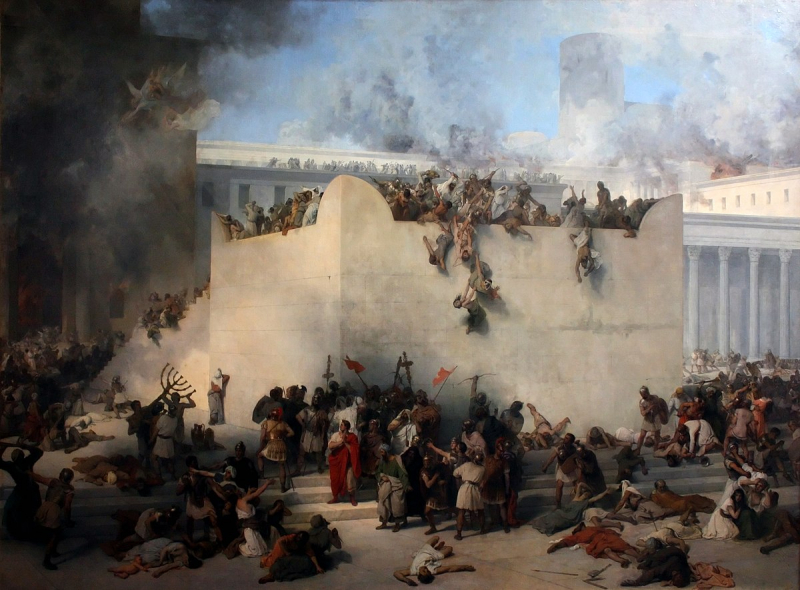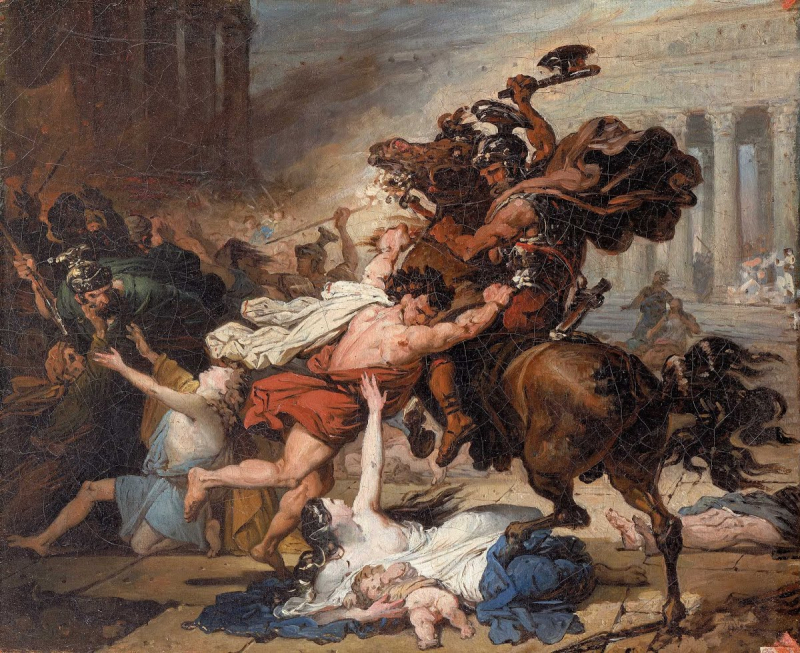Jerusalem
The Romans were known for their ruthlessness on the battlefield, though their most brutal campaigns were reserved for rebelling populations. The Jewish citizens of Jerusalem had the misfortune of discovering this firsthand in 70 AD, four years after the Jerusalem riots of 66 AD, when the Jews overthrew the Romans and installed a revolutionary government.
The Roman legions, led by Titus, surrounded the city and began slowly squeezing life from the Jewish stronghold. By the year 70, the attackers had breached Jerusalem's outer walls and began a systematic ransacking of the city. The assault culminated in the burning and destruction of the Temple, which served as the center of Judaism. The hallowed remains of the Temple were carried to Rome and exhibited in celebration of the triumph. Thousands were slaughtered by the Romans in their victory. Thousands more were enslaved and sent to work in Egypt's mines, while others were dispersed to arenas across the Empire to be butchered for the public's entertainment.
- Location: Jerusalem, Israel
- Stages: 70–73 AD
- Deaths: approximately 1,100,000 people












